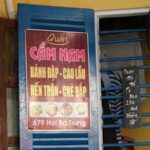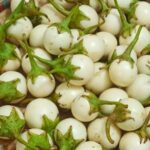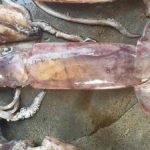Cao lầu is a traditional Vietnamese dish, famous in the city of Hoi An, central Vietnam. It is one of the beloved specialty dishes known for its unique flavor and harmonious combination of ingredients. Let’s explore the details of this dish in today’s article!
1 What is Cao Lầu?
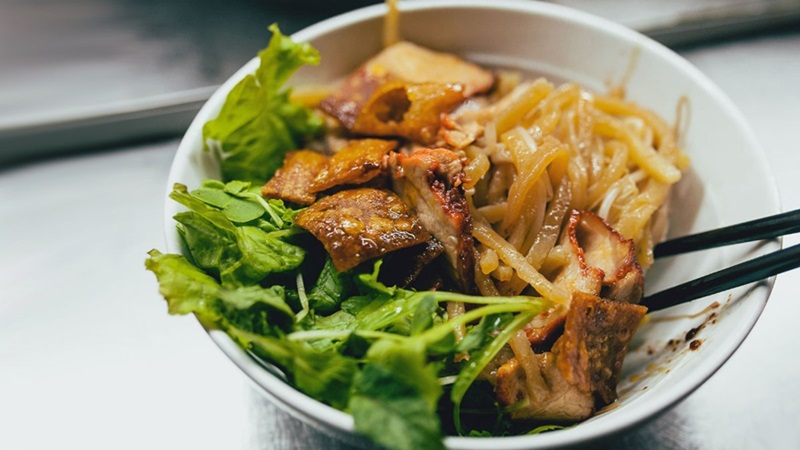 What is Cao Lầu?
What is Cao Lầu?
Cao lầu is a renowned traditional dish of Hoi An, Vietnam. The dish consists of noodles made from rice soaked in lye water, either grilled or stir-fried, along with herbs and topped with pork belly or crispy rice crackers. Cao lầu uses only a small amount of broth made from pork bones, creating a savory flavor without being too soupy. The dish is characterized by a blend of salty, sweet, and mildly spicy flavors, often accompanied by chili sauce or soy sauce.
2 Origin of Cao Lầu
Cao lầu is believed to have originated in the city of Hoi An, an ancient town in central Vietnam. Hoi An was once a bustling international trading port, a cultural melting pot influenced by countries such as China, Japan, and European nations. This cultural exchange left its mark on the local cuisine, including cao lầu.
 Origin of Cao Lầu
Origin of Cao Lầu
According to some sources, the name “cao lầu” may have derived from Chinese or Japanese, and this dish is believed to have appeared as early as the 17th or 18th century. The combination of Chinese cooking techniques, distinct Vietnamese seasoning, and refined Japanese presentation resulted in a unique dish, deeply rooted in the history and culture of Hoi An.
Despite various theories about its exact origin, cao lầu remains an iconic symbol of Hoi An’s cuisine, attracting visitors from all over the world.
3 How is Cao Lầu Different from Mì Quảng?
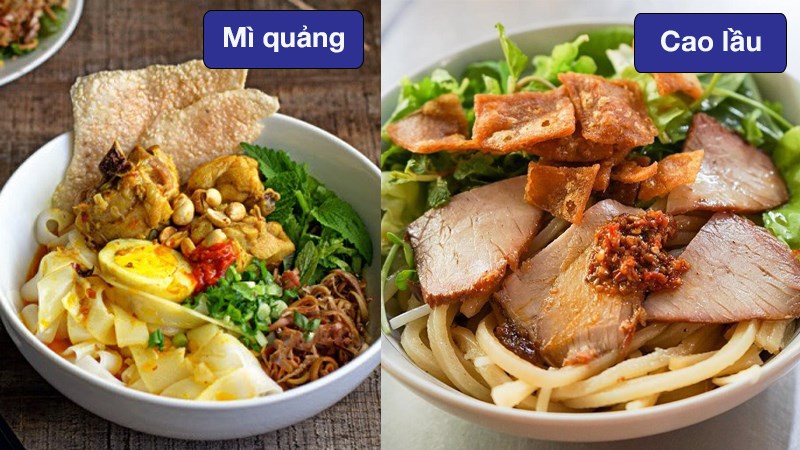 What’s the Difference Between Cao Lầu and Mì Quảng?
What’s the Difference Between Cao Lầu and Mì Quảng?
Similarities
Both Cao lầu and Mì Quảng are specialty dishes of central Vietnam. They share the use of chewy rice noodles, each with its distinct flavor. Although the noodle preparation methods differ, both dishes use only a small amount of broth, ensuring a flavorful yet non-soupy consistency, setting them apart from other noodle soups like phở or bún.
Additionally, both dishes are served with fresh herbs and vegetables, adding a refreshing touch and balancing the flavors. These similarities make Cao lầu and Mì Quảng stand out in the diverse cuisine of central Vietnam.
Differences
Cao lầu features thicker and chewier noodles made from rice soaked in lye water. It is typically accompanied by grilled pork belly, crispy pork fat, fresh herbs, and a small amount of broth, resulting in a dry but savory dish.
On the other hand, Mì Quảng uses thinner noodles made from white or yellow rice flour (achieved through the addition of turmeric powder) and is often served with a variety of ingredients such as shrimp, chicken, quail eggs, and pork. Mì Quảng is typically served with broth covering about half of the bowl, seasoned to perfection but lighter and more delicate than cao lầu.
4 How to Cook Cao Lầu
 Cooking Cao Lầu
Cooking Cao Lầu
Preparing cao lầu requires attention to detail to capture the dish’s unique flavor. The noodles are made from rice soaked in lye water and water from Bá Lễ, an ancient well in Hoi An, giving them a distinct texture and color. Pork is marinated with a blend of shallots, garlic, fish sauce, and black pepper and then grilled or stir-fried to perfection.
The broth is prepared by simmering pork bones to create a naturally sweet flavor, but only a small amount is used to moisten the noodles. When served, cao lầu is mixed with fresh herbs, green onions, bean sprouts, grilled pork, and a sprinkle of crispy pork fat or rice crackers, resulting in a burst of flavors in every bite.
Reference:
This concludes our comprehensive guide to Cao lầu. We hope that through this article, you have gained valuable insights into the rich culinary culture of Vietnam. Enjoy your culinary adventures!
The Ultimate Guide to Indulging in Hoi An’s Delights: 6 Mouth-watering Spots for the Authentic Banh Dap Experience
Banh Dap is a must-try delicacy when visiting Hoi An. This traditional Vietnamese dish is a local favorite and has become a culinary icon in the ancient town. With its unique texture and explosive flavors, Banh Dap is a sensory experience like no other. Join us as we explore the six best Banh Dap hotspots in Hoi An, where you can indulge in this mouthwatering treat and discover a true taste of Vietnam.
“The Secret to Perfectly Pickled Cauliflower: A Step-by-Step Guide to Achieving Bright White, Crisp, and Support-Free Results”
Introducing the ultimate guide to achieving perfectly pickled white cauliflower – crisp, tangy, and free from unsightly discoloration. Unveil the secrets to creating a crunchy, vibrant treat that will impress and delight, with a technique so masterful it borders on art. Learn how to transform ordinary cauliflower into a mouthwatering delicacy, a true testament to your culinary prowess. Get ready to impress!
What is Cuttlefish? Is it Poisonous? Delicious Dishes from Cuttlefish.
The awe-inspiring Giant Squid, also known as the Ghost Squid or Ocean Squid, is a true marvel of the deep. With its impressive size and mysterious allure, it’s no wonder that this colossal cephalopod is taking street food by storm. Join us as we delve into the fascinating world of the Giant Squid, exploring its unique characteristics and discovering delicious ways to prepare this monster of the deep.


























